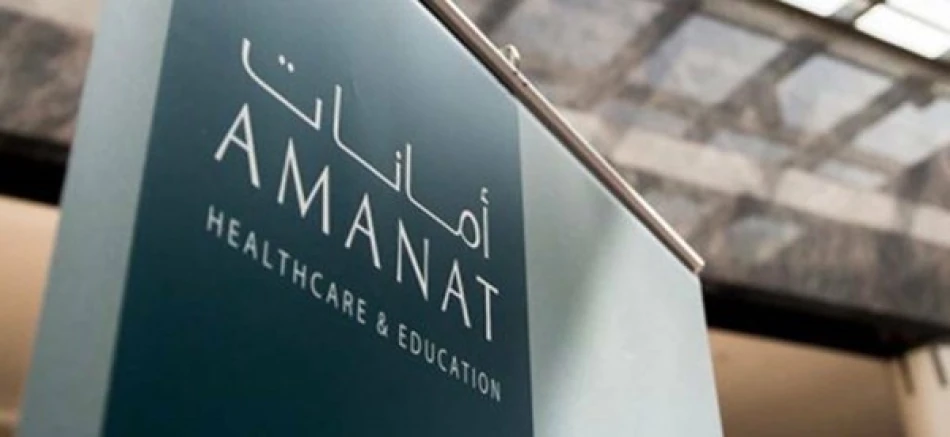
Amánat Revenues Surge 13% to AED 468 Million in First Half
UAE's Amanat Holdings Surges 13% as Education Boom Drives Multi-Sector Growth Strategy
Amanat Holdings has delivered robust first-half 2025 results with revenues climbing 13% year-on-year to AED 468.4 million, powered by a 23% surge in its education division. The Dubai-listed investment firm's performance reflects the UAE's broader economic diversification push and growing demand for premium healthcare and education services across the Gulf region.
Strong Financial Performance Across Key Metrics
The company's EBITDA from continuing operations rose 12% year-on-year to AED 173.6 million during the first half of 2025. Excluding startup costs from the new 150-bed Al Khobar facility in Saudi Arabia, EBITDA growth reached 15%, demonstrating the underlying strength of Amanat's core operations.
Operating profits from continuing operations increased 6% to AED 104.7 million, or 13% when adjusting for the Saudi expansion costs. This measured growth pattern suggests Amanat is prioritizing sustainable expansion over aggressive short-term gains—a strategy that typically appeals to institutional investors in volatile market conditions.
Education Sector Leads Growth Charge
Record Student Enrollment Numbers
Amanat's education portfolio hit a milestone with 23,900 enrolled students, representing 17% year-on-year growth. This surge aligns with the UAE's National Strategy for Higher Education 2030, which aims to position the country as a global education hub. The strong enrollment figures also reflect growing expatriate populations in the Gulf and increased demand for international curriculum schools.
Strategic Asset Optimization
In a notable strategic move, Amanat signed an agreement on August 8, 2025, to divest the real estate assets of North London Collegiate School for AED 453 million. This transaction suggests the company is moving toward an asset-light model, freeing up capital for expansion while maintaining operational control of its education brands.
Healthcare Expansion Gaining Momentum
The healthcare division posted 10% EBITDA growth (excluding startup costs), with bed capacity continuing to expand. The addition of 40 licensed beds in Saudi Arabia after the reporting period signals Amanat's commitment to the Kingdom's Vision 2030 healthcare transformation goals.
This expansion strategy positions Amanat to capitalize on Saudi Arabia's $64 billion healthcare market opportunity, where private sector participation is actively encouraged by government policy.
Market Positioning and Investment Outlook
Gulf Diversification Play
Amanat's dual-sector approach mirrors successful international models like Singapore's Temasek Holdings, which has built substantial positions in both education and healthcare. The company's geographic spread across the UAE and Saudi Arabia provides natural hedging against single-market risks while tapping into two of the Gulf's fastest-growing economies.
Investor Implications
For equity investors, Amanat's consistent double-digit growth in defensive sectors offers an attractive risk-adjusted return profile. The education and healthcare sectors typically demonstrate recession-resistant characteristics, making the stock appealing during periods of economic uncertainty.
The company's focus on operational excellence over rapid expansion suggests management is building for long-term value creation rather than chasing short-term growth metrics that often prove unsustainable.
Strategic Outlook
Dr. Shamsheer Vayalil, Amanat's Chairman, emphasized the company's "strong momentum" and positioning for "sustainable future growth." This measured optimism reflects broader confidence in the Gulf's demographic trends, where young populations and rising disposable incomes continue driving demand for premium education and healthcare services.
The combination of organic growth, strategic acquisitions, and selective asset disposals positions Amanat as a key beneficiary of the Gulf's ongoing economic transformation, particularly as governments across the region prioritize human capital development and healthcare infrastructure modernization.
 Layla Al Mansoori
Layla Al Mansoori







